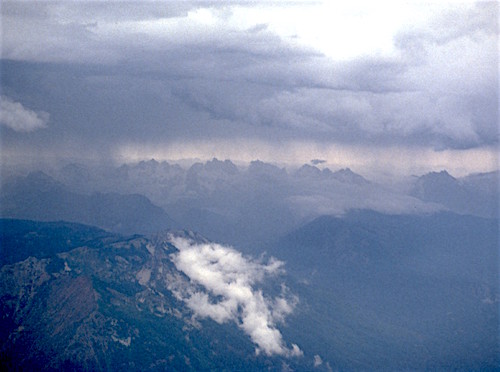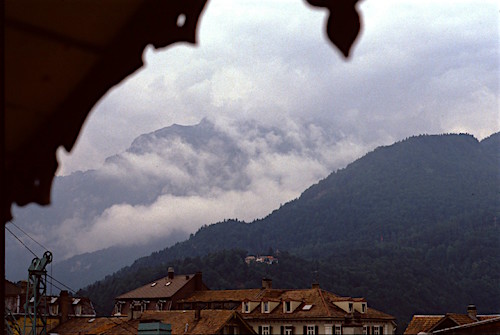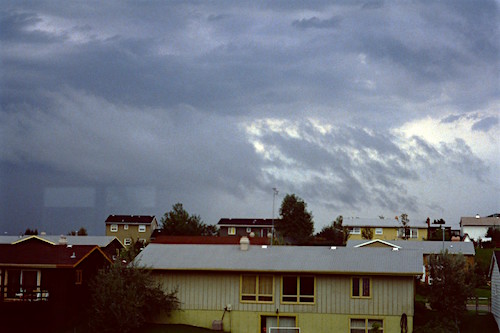Special Clouds > Fractus Clouds
Learning Goal 1b. Recognize special clouds (e.g. castellanus, billow, lenticular, rotor, banner, fractus, etc.)
Fractus clouds are low-altitude, ragged-looking clouds that are also known as scud. They can form in two ways.
- When warm rain falls from slightly higher clouds through cooler
cloud-free air below, some water evaporates from the raindrops as they
fall. But this causes too much humidity in the colder air, forcing some
of the water vapor to re-condense back into tiny cloud droplets, making
the fractus cloud. If this cloud touches the ground, it would be called
precipitation fog (see
Learning Goal 1h).
- If air near the ground is fairly humid but somewhat cool (so that it does not want to rise as thermals), the humid air could still be forced upward if the air is windy and turbulent. Turbulence creates random gusts that include some updraft gusts that lift the humid air up to its lifting condensation level (LCL, see Learning Goal 1d), the height at which lifted air parcels become saturated, and hence where clouds will form. Since the turbulence is lifting air with varying temperature and humidity, the resulting fractus cloud has a varying or irregular cloud base (not a flat cloud base such as for cumulus clouds).
Here are some photo examples. In each of theses cases of precipitation-created fractus, the fractus clouds are the irregularly shaped ones that are closest to the ground, under the layer of raining clouds. These scud clouds indicate high humidity (such as due to drizzle falling from higher clouds) and strong winds at low altitude. These clouds are usually isolated and scattered, not overcast (for more information on cloud coverage, see Learning Goal 1c).
When these clouds form over forested hillsides, as in the figures below, the World Meteorological Organization (WMO) calls these stratus silvagenitus. These are due to moisture input to the air from forest canopies, either as the result of evaporation of water from wet leaves after arain shower, or evapotranspiration (exhale) of moisture from inside the leaves.


For more photos of fractus, see Wikipedia - fractus cloud.
Keywords: fractus clouds, lifting condensation level (LCL), precipitation fog, scud
Extra info for experts; Not Needed for this Course.
Use this expert_resources link to find all the items listed below:
- Item - Topic
- World.A.1. - World Meteorological Organization (WMO) "International Cloud Atlas"
- USA.B.1. - Wikipedia list of cloud types
- World.A.2. - WMO: Manual on Cloud Observations (an old, outdated document)
- USA.A.1. - American Meteorological Society (AMS): Glossary of Meteorology
- USA.C.1. - Practical Meteorology (PrMet): Chapter 6, Clouds
Image credits. All figures by Roland Stull.
